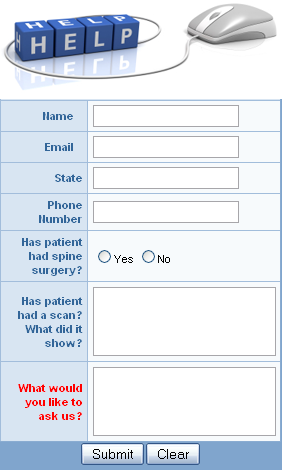Non-Traumatic Procedure.
- Most Advanced Procedure
At the Back Institute, we perform the most advanced non traumatic procedures available with the most technologically advanced surgery tools and equipment. Some of our technology is only available at the Back Institute. With a Non-Traumatic Discectomy at the Back Institute, there is no cutting, no bleeding and no scarring. Patients are left with only a dot opening that is covered with a band aid. Our surgery center has the highest level of certification. From all aspects of surgery, the Back Institute is the safest and most advanced center for Non-Traumatic Surgery anywhere in the world.
- A PRESTIGIOUS INSTITUTION
Back institute is a prestigious institution at the highest level, and in fact ahead of the other top institutions (Ivy League, etc.) in the field of spinal non-traumatic access for disc disorders, which is why many doctors from these other top institutions have come to us for their own spine procedures!! The fundamental approaches for non-traumatic access spinal disc removal were invented here. Since 1986, we have developed a lengthy resume of peer reviewed publications (more than 40 in the non-traumatic access field) and have taught our advanced techniques around the world.
- Outpatient Procedure
A Non Traumatic Discectomy is an outpatient procedure to physically remove the offending disc material. The procedure is performed in the operating room. Patients are administered local anesthesia, and also IV sedation is given by the anesthesiologist.
- Technique
Then, with the help of x-ray fluoroscopy and a magnified video for guidance, a small specially designed nano probe is inserted through the skin of the back, between the vertebrae and into the problem disc location. Nano tools are then used through the hollow center of the probe to remove the offending disc. The Nano tools can be used to push the bulging disc back into place and also be used for the removal of disc fragments and small bone spurs.
- No Stitches
On average, the procedure takes about 45 minutes to an hour. X-ray exposure is minimal. You normally will feel little, if any, pain or discomfort. Upon completion, the probe is removed and a small Band-Aid is placed over the incision. There are no stitches.
- Tiny Opening
The amount of nucleus tissue removed varies, and the supporting structure of the disc is not affected by the surgery. In comparison to large incisions required for open surgery, the access route to the disc in non-traumatic procedures consists of only the probe's small puncture site, usually the size of a freckle.
- No Bone Removal
A Non Traumatic Discectomy is different from an open lumbar disc surgery because there is no traumatic back muscle dissection, no bone removal, and no large skin incision. Complications are almost non existent at the Back Institute. Higher risk operations, such as laminotomy, foraminotomy, MED, and microdiscectomy are done around the country at other facilities. The description "minimally invasive" that centers are using has lost its significance. These so called minimally invasive procedures are actually very invasive because surgeons are cutting muscle and removing bone to get to the disc. They are just doing it through a smaller opening, so they call it minimally invasive. At the Back Institute, we do Non-Traumatic procedures, where there is no muscle cut, no bone removed, and no stitches.
|

